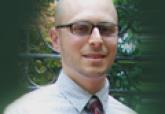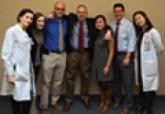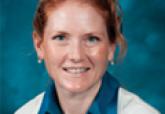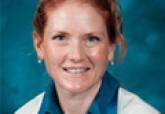For Residents

Giving a Good Needle: Resident Guide to Decreasing Injection Pain
Residency is a time when we set a foundation for how we will practice dermatology in the future. Perfecting good injection technique early in one’...
Dr. Cohen is from the Division of Dermatology, University of California San Diego.
Dr. Cohen reports no conflicts of interest in relation to this post.


Educating medical students incorporates not only classroom instruction but also bedside teaching. However, in a recent article McGee (JAMA. 2014;311:1971-1972) commented that “teachers spend less than 25% of their teaching time at the bedside.” Therefore, he reconsidered how to routinely incorporate bedside teaching rounds.
McGee recommended that the oral presentation of the patient be brief. He also commented that the subjects best suited for bedside teaching are those who focus on communication, professionalism, and clinical skills. In contrast, complex discussions of pathophysiology and treatment are more appropriate for the classroom. He suggested that the teacher compose and memorize minilectures to use during rounds at the bedside.
In addition, McGee “celebrate[d] the triumphs of bedside examination” by providing 3 personal examples in which patient evaluation at the bedside trumped technology. It is noteworthy but not unexpected that all of the patients had systemic conditions for which the cutaneous findings, in concert with other nondermatologic features, helped to establish the diagnosis. The cases included patients who either had subacute bacterial endocarditis with splinter hemorrhages, reactive arthritis with psoriasiform lesions on the soles of the feet and penis, or hereditary hemorrhagic telangiectasia with pallor and matlike telangiectases on the fingertips and lower lip.
I fondly remember that during my residency a group of no fewer than 15 to 20 individuals—not only the entire dermatology department but also the medical students on their dermatology clerkship; other clinicians attending the weekly Grand Rounds; and medicine, pediatric, or surgery residents who joined the group—ambulated through the floors of the hospital visiting several patients in their rooms. Bedside teaching gave those who were present the opportunity to observe cutaneous manifestations of systemic diseases. It also allowed for the discovery of clinical observations, such as the linear tongue fissures of herpetic geometric glossitis in immunocompromised patients with oral herpes simplex virus infection.
What’s the issue?
Is teaching at the bedside an activity destined for extinction? Is this time-honored classical method of training, since the days of Sir William Olser at Johns Hopkins Hospital in Baltimore, Maryland, becoming an educational artifact of only historic significance?
Unfortunately, there are several barriers to bedside teaching. For example, insufficient time to teach is a major problem. In addition, many diagnoses require ancillary technology such as an electrocardiogram or roentgenogram.
However, there are definite benefits of bedside teaching rounds. This activity can help to calm patients. Teaching at the bedside also provides the mentee with an opportunity to not only see their mentors interact with patients but also to learn physical diagnosis and embrace the concept that patients are unique individuals and not merely abstract diseases or cases. Additionally, bedside teaching provides an opportunity for many patients who derive personal gratification by being able to help in the education of others.
Teaching dermatology often involves the mentor instructing the mentee, either during an encounter with the patient, shortly after they evaluate the patient together, or both.
Dermatology training conferences and society meetings often incorporate patient viewing and discussion. Indeed, bedside teaching and its equivalent when evaluating and treating patients in the office has been and continues to be an integral aspect of dermatology training.

Residency is a time when we set a foundation for how we will practice dermatology in the future. Perfecting good injection technique early in one’...

Biologic agents, or protein-based drugs derived from living cells, are becoming commonplace in dermatology for the treatment of psoriasis, but...

As residents, we all owe at least some of our knowledge base to the teachings of Dirk M. Elston, MD. I recently sat down with Dr. Elston to find...

Educational opportunities abound for dermatology residents, ranging from conferences to board review courses to cosmetic forums.

Osteopathic physicians are fully licensed and can prescribe medicine as well as perform surgery. There are general misunderstandings about doctors...
